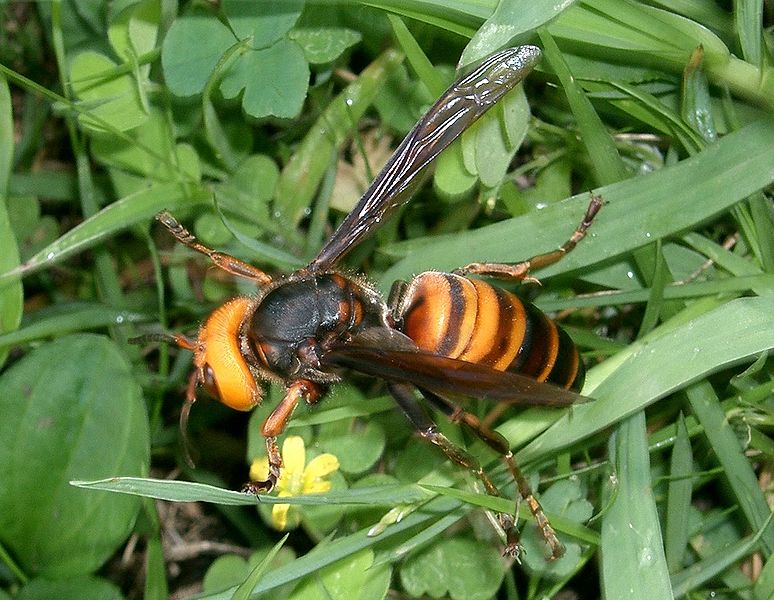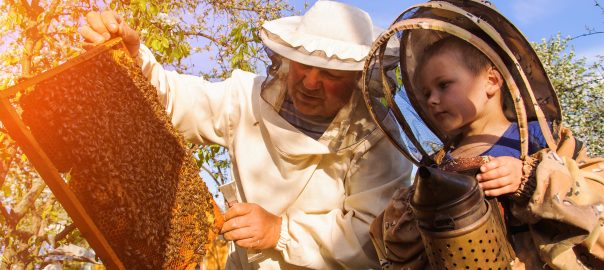Professor Giles Budge & Brett Cherry
There are between 25,000 to 30,000 bee species living today that affect 35% of global agricultural land. Therefore, we need an international understanding of honeybee health, both in terms of the pathogens and environmental factors that affect them, and what beekeepers can do to improve the health and ecological status of bees.
Bees are threatened by a range of factors: from diseases to pesticides. Being an especially sensitive species of insect, it is no surprise that climate change also affects bees. The primary culprits threatening bee survival include habitat loss, pollution, pesticides and pathogens.
Previous research found that local species are more likely to survive than non-local ones in Europe. In South Africa, the location of the colony strongly influenced the prevalence of autumn mites and viruses.
Research on beekeeper education and disease control published in Plos One, identified key risk factors that lead to the death of honeybee colonies. It was the first surveillance programme done on randomly selected participants and used standardised methods to monitor the health of the honeybee colony, pests, diseases and management practices across 17 European countries from 2012-14.
While there is variation in colony losses across EU member states, and between years of the study, the role of beekeepers in protecting honeybee colonies appears indispensable.
Beekeepers’ education and experience is invaluable
The level of experience and qualification of beekeepers influenced reductions in winter mortality. Professional beekeepers with relevant qualifications and more than five years’ experience were less likely to have bees die in the winter.
This means the professional background of beekeepers shouldn’t be underestimated as they clearly benefit the health of bees and help prevent mortality. This makes sense as trained professional beekeepers have more knowledge about detecting and managing diseases such as varroosis caused by Varroa mites.
The practices of beekeepers compensate for bee colony losses. More efforts to train beekeepers to promote good beekeeping practices and identify signs of disease could reduce mortality further and prevent the spread of disease. Further experimental research may confirm these initial observations, but the results so far seem promising.
Bee surveys needed
Honeybee research to date shows that to observe risks to bees health surveys at the landscape, including environmental factors, could also help.
For example, bee health surveys could draw attention to the importance of weather and landscape to pesticide risks. Environmental factors like temperature and poor weather modify the effects of neonicotinoid pesticides on homing flight performance. Another important influence is timing of exposure.
Sentinel hives for early warning systems

Sentinel hives act as an early warning system to provide researchers and beekeepers with a powerful tool for monitoring the health of honeybees. They detect disease caused by varroa and pests like the Asian hornet (Vespa velutina) which eats honeybees.
Mathematical modelling confirms that sentinels have a strong role to play in the early detection of major risks to bees, especially if carefully positioned across the landscape. In England for example, placing sentinels in the southeast and London could detect import risks early on. Even a small number of sentinels could improve prevention of large-scale undetected outbreaks, although having too many could be costly and impractical.
Make your garden bee friendly
Gardens have an important role to play in encouraging the prevalence, health and protection of bees. There are many ways to enhance our gardens to be more bee friendly; one of them is planting flowers that bees like and providing water sources for bees is another great way to help bees survive during turbulent times.
References
Jacques A, Laurent M, EPILOBEE Consortium, Ribière-Chabert M, Saussac M, Bougeard S, et al. (2017) A pan-European epidemiological study reveals honey bee colony survival depends on beekeeper education and disease control. PLoS ONE 12(3): e0172591. https://doi.org/10.1371/journal.pone.0172591
Keeling Matt J., Datta Samik, Franklin Daniel N., Flatman Ivor, Wattam Andy, Brown Mike and Budge Giles E. Efficient use of sentinel sites: detection of invasive honeybee pests and diseases in the UK14J. R. Soc. Interface http://doi.org/10.1098/rsif.2016.0908
Professor Giles Budge is an applied scientist in the Institute for Agri-Food Research and Innovation (IAFRI) at Newcastle University. Find out more about bee research in the School of Natural and Environmental Sciences.
